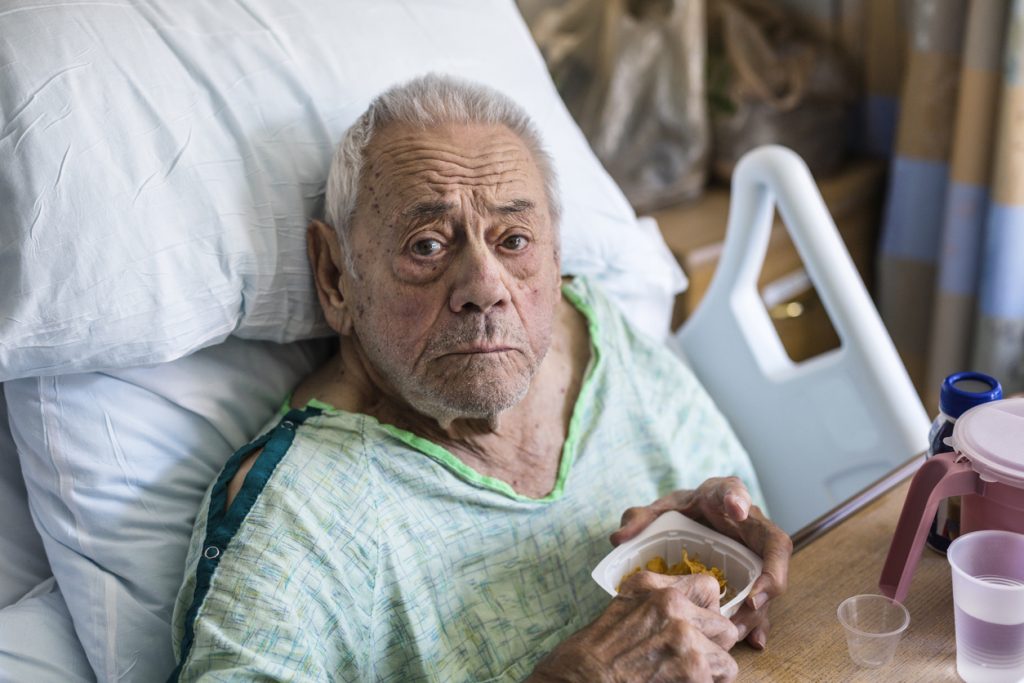In this blog for our Evidence for Everyday Nursing series, adapted from her recent article published in the British Journal of Community Nursing, Sarah Chapman puts the spotlight on the evidence around pressure ulcer management and the implications for everyday practice and future research.
Page last updated: 13 February 2024.
The burden of pressure ulcers
The burden of pressure ulcers on those living with them, on those engaged in efforts to prevent and treat them, and on healthcare resources, is enormous. Pressure ulcer prevention and reduction is a high priority for the NHS (NHS England, 2014). Commissioning for Quality and Innovation (CQUIN) suggests that, based on the NHS SafetyRefers to serious adverse effects, such as those that threaten life, require or prolong hospitalization, result in permanent disability, or cause birth defects. Thermometer Pilot, pressure ulcer incidenceThe number of new occurrences of something in a population over a particular period of time, e.g. the number of cases of a disease in a country over one year. can be halved in one year, and the tools they cite for achieving this include ‘high quality evidence (NICE guidelines)’ (NHS England, 2014: p.22). The NICE guideline on Pressure ulcers: prevention and management (National Institute for Health and Care Excellence, 2014) draws on the best available evidence but in relation to many core elements of care this is not high quality. Decisions about care need to be informed by reliable evidence of effectivenessThe ability of an intervention (for example a drug, surgery, or exercise) to produce a desired effect, such as reduce symptoms. and safety, but primary research is lagging behind.
Pressure ulcers are common
A prevalenceThe proportion of a population who have a particular condition or characteristic. For example, the percentage of people in a city with a particular disease, or who smoke. survey conducted in the city of Leeds as part of an NIHR-funded five-year programme of work, the Wounds Research for Patient Benefit (Cullum et al, 2016a), demonstrated that complex wounds are common, with an estimated point prevalence of 1.47 per 1000 people (95% confidence interval 1.38 to 1.56 per 1000 people), and that pressure ulcers were the most frequent type of complex wound (0.31 per 1000 people).
The survey also found that most people were receiving wound care from community nurses, with a median of two visits per week, lasting just under half an hour. The standard of care was generally high; almost 95% of all pressure ulcers had a documented European Pressure Ulcer Advisory Panel (EPUAP) ulcer severity classification in line with NICE guidelines and 73% of people with pressure ulcers had a pressure-relieving mattress.
Clearly, nurses are working hard on pressure ulcer management. The cornerstones of care revolve around low-technology interventions such as repositioning; essentially nothing new. But is, what is considered to be ‘best practice’, actually ‘evidence-based practice’ and does this matter?
Is ‘best practice’ evidence-based?
There are more than 20 Cochrane reviewsCochrane Reviews are systematic reviews. In systematic reviews we search for and summarize studies that answer a specific research question (e.g. is paracetamol effective and safe for treating back pain?). The studies are identified, assessed, and summarized by using a systematic and predefined approach. They inform recommendations for healthcare and research. that focus on interventions to prevent or treat pressure ulcers and 10 more in preparation. We would hope and expect that this would constitute a good evidence base to guide practice. Instead, these systematic reviewsIn systematic reviews we search for and summarize studies that answer a specific research question (e.g. is paracetamol effective and safe for treating back pain?). The studies are identified, assessed, and summarized by using a systematic and predefined approach. They inform recommendations for healthcare and research. reveal serious shortcomings in the primary research and large gaps in the evidence.
Rethinking what you think works…
Recognizing the need for reliable evidence to guide practice can be more difficult when considering well-established techniques which experience suggests are likely to be helpful. One way to think about this is to consider what would you need to know before using a new interventionA treatment, procedure or programme of health care that has the potential to change the course of events of a healthcare condition. Examples include a drug, surgery, exercise or counselling. with your patient. I’ve written about this in an earlier blog, Everyday practice: tried, trusted and tested? Here’s why we need evidence, suggesting that the things we would want to know before using a brand new, unfamiliar device on a patient, are things we should be asking about established practices. Unfortunately, there is no reliable evidence on repositioning (Gillespie et al, 2020), to guide decisions about optimal frequency, say, and nor can we be at all certain about its impact on pressure ulcer incidence and healing.

More evidence gaps
Cochrane reviews have brought together the best available evidence on many interventions to prevent and treat pressure ulcers, but have been unable to answer questions about effectiveness and safety. They have revealed serious shortcomings in the primary research, including small sample sizes, poor reporting and short follow-up, and an inadequate or non-existent evidence base for many practices.
Which dressing?
Making decisions on which type of dressing to use to promote healing is not supported by high-quality evidence. The guidance from NICE on pressure ulcer management (2014) states that gauze dressings should not be used to treat pressure ulcers and that practitioners should ‘consider using a dressing for adults that promotes a warm, moist wound healing environment’ (p. 16); but which?
Evidence of the comparative effectiveness of the array of sophisticated dressings available would inform practice, but there is little to go on (Chapman, 2015). Cochrane Reviews exploring the effectiveness of alginate dressings (Dumville et al, 2015b) and hydrogel dressings (Dumville et al, 2015a) exposed the paucity of primary research and continued uncertainty, as did reviews on negative pressure wound therapy (Dumville et al, 2023); and foam dressings (Walker et al, 2017).
Update – June 2022: For the most recent Cochrane evidenceCochrane Reviews are systematic reviews. In systematic reviews we search for and summarize studies that answer a specific research question (e.g. is paracetamol effective and safe for treating back pain?). The studies are identified, assessed, and summarized by using a systematic and predefined approach. They inform recommendations for healthcare and research., see the blog Dressings and topical agents for healing pressure ulcers: which should we choose?
Evidence is lacking in all areas of pressure ulcer prevention and treatment

Other Cochrane reviews found insufficient evidence to inform practice on the use of nutritional interventions to prevent or promote pressure ulcer healing (Langer et al, 2024); on topical agents (Moore and Webster, 2018) and massage (Zhang et al, 2015) as preventive measures; and on treatmentSomething done with the aim of improving health or relieving suffering. For example, medicines, surgery, psychological and physical therapies, diet and exercise changes. with pressure-relieving devices for heel pressure ulcers (McGinnis and Stubbs, 2014), ultrasound (Akbari Sari et al, 2006); antibiotics and antiseptics (Norman et al, 2016), phototherapy (Chen et al, 2014); reconstructive surgery (Wong et al, 2016); electromagnetic therapy (Aziz and Bell-Syer, 2015); and bed rest for wheelchair users with pressure ulcers (Moore et al, 2016).
There is no good evidence to support any particular wound cleansing agent or technique for pressure ulcers (Moore and Cowman, 2013). There was no evidence from randomizedRandomization is the process of randomly dividing into groups the people taking part in a trial. One group (the intervention group) will be given the intervention being tested (for example a drug, surgery, or exercise) and compared with a group which does not receive the intervention (the control group). studies on the impact of wound-care teams for pressure ulcer prevention and management (Moore et al, 2015). Nor has the use of structured riskA way of expressing the chance of an event taking place, expressed as the number of events divided by the total number of observations or people. It can be stated as ‘the chance of falling were one in four’ (1/4 = 25%). This measure is good no matter the incidence of events i.e. common or infrequent. assessment tools been shown to be effective in reducing pressure ulcer incidence (Moore and Patton, 2019; Chapman, 2014).
The review on support surfaces (McInnes et al, 2015) found that standard foam mattresses were consistently out-performed by higher specification foam mattresses, and that medical grade sheepskins are associated with a lower incidence of pressure ulcers, but more, better, research is needed in this area too. For managing existing pressure ulcers, there is no conclusive evidence on the superiority of any support surface (McInnes et al, 2018).
Update – June 2022: For the most recent Cochrane evidence on support surfaces see the blog Support surfaces for managing pressure ulcers: which to choose?
Priorities in pressure ulcer research
Not only do we need research to be designed, implemented and reported in ways that ensure it is useful, but to address the most important aspects of pressure ulcer prevention and treatment.
One of the objectives of the Wounds Research for Patient Benefit Programme Grant (Cullum et al, 2016a) was to research priorities for people with complex wounds from the perspectives of patients, carers and healthcare professionals. Pressure ulcers were selected as the focus for the first National Institute for Health Research (NIHR) James Lind Alliance (JLA) Priority Setting Partnership (PSP) on complex wounds and with this came the particular challenges of involving people with pressure ulcers in research associated with their age, multiple morbidities and social isolation. Indeed the service users who participated in this research prioritization exercise were generally younger and fitter than those most at risk of pressure ulcers, nevertheless the PSP succeeded in identifying research priorities which capture the views of patients, carers and healthcare professionals (NIHR JLA PSP, 2013). Of the top 10 priorities, which were extended to 12 during the PSP prioritization exercise, the first five concern pressure ulcer prevention.

The Chief Investigator of the Programme Grant, Professor Nicky Cullum from the University of Manchester’s School of Nursing, Midwifery and Social Work, who is also the Co-ordinating Editor of Cochrane Wounds, is looking to the future of wounds research:
‘The James Lind Priority Setting Partnership on pressure ulcers illuminated for the first time the research priorities of people living with pressure ulcer risk and their carers. This list of priorities is an excellent signpost for researchers in the field. At Cochrane Wounds we have already completed systematic reviews in some JLA priority topics, where there was no existing review; other topics have been prioritized for review updates. What we now need in this field is high quality primary research in high priority topics so that we can provide some answers.’ (Cullum N, personal communication, 2017).
Evidence matters
The work of preventing pressure ulcers and promoting healing when they do occur, is underpinned by an understanding of physiology and the effects of pressure on tissue, and some basic techniques and equipment, which have a sound theoretical rationale. But that is not enough. Evidence matters: knowing what is most likely to work, what to use and how to use it and for whom, and how to avoid harm. For funders, policy makers and health professionals, it is important to know what the best available evidence says and to advocate for its use, and for interventions to be tested in rigorous trialsClinical trials are research studies involving people who use healthcare services. They often compare a new or different treatment with the best treatment currently available. This is to test whether the new or different treatment is safe, effective and any better than what is currently used. No matter how promising a new treatment may appear during tests in a laboratory, it must go through clinical trials before its benefits and risks can really be known..
Regrettably, there is a very poor evidence-base for most aspects of pressure area management, in terms of its assessment through reliable research. We now know what the priorities are for those living with, or at risk of pressure ulcers, or caring for people with them. We have new Cochrane reviews in preparation, and existing reviews are periodically updated to capture new research. Primary research needs to catch up. Only then can today’s best practice become tomorrow’s better, evidence-based practice.
Join in the conversation on Twitter @SarahChapman30 @CochraneUk #EENursing
This is a shorter version of the following article: Chapman S. Preventing and treating pressure ulcers: evidence review. Br J Community Nurs 2017;22(Suppl 3):S37-40. doi: 10.12968/bjcn.2017.22.Sup3.S37.
Sarah Chapman has nothing to disclose.



Since it doesn’t look like anyone has given you help, I’d recommend the text on wounds from WOCNS (Wound, Ostomy, and Continence Society) there are other resources listed on that site. I think it is wocn.org
I am a Nurse Practitioner in America working in a subacute/ long term care facility. We have a wound care NP who visits our wound patients once weekly and establishes a plan of care for them. We still have patients who develop new wounds during their stay at our facility. I am also in search of best practices related to wound care and prevention. This is quite a difficult task!